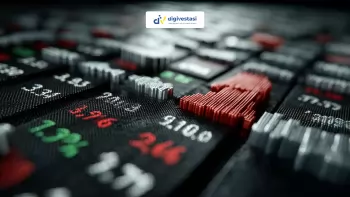
Saham News
Foreign Investors Quietly Buy These 10 Stocks - Check the List!
/index.php
Berita Terkini - Posted on 29 June 2025 Reading time 5 minutes

Indonesia’s National Food Agency (Bapanas) has stated that the country’s rice sector is expected to face significant challenges during the second half of 2025. In response, Bapanas is prioritizing efforts to increase the government’s rice reserves. The Head of Bapanas, Arief Prasetyo Adi, emphasized that the government needs to urgently secure the Government Rice Reserve (CBP) in preparation for these challenges, which are expected to escalate in the latter half of the year.
“Typically, the most difficult months are November, December, and even into January. That’s when we must be prepared with CBP, just like what the government is currently doing. It means we’re on the right track,” Arief said in a written statement cited on Sunday, June 29, 2025.
Arief explained that rice production in Indonesia has increased this year compared to the same period last year. According to the Food Outlook Biannual Report on Global Food Markets published by the Food and Agriculture Organization (FAO) in June, Indonesia ranks as the fourth-largest rice producer globally. This puts the country ahead of other ASEAN nations such as Vietnam, Thailand, Myanmar, and the Philippines.
He noted that there will be no major harvests in the next one to two months. The last significant harvest occurred in March and April, producing the equivalent of 10 million tons of rice. Out of that, about 2.5 to 2.6 million tons have been secured by the state logistics agency, Bulog. The remainder—approximately three-quarters—is still in rice mills, either with the general public or farmers.
Nonetheless, Arief pointed out that a decline in rice production typically leads to a rise in unhusked rice prices at the farmer level. “This is the moment when the government should utilize the existing rice stocks in Bulog,” he stated.
As of June 26, 2025, the average price of harvested dry unhusked rice (GKP) at the farmer level, based on Bapanas’ Food Price Panel, stood at Rp6,733 per kilogram. This figure is 3.58% higher than the Government Purchase Price (HPP), which is set at Rp6,500 per kilogram. Compared to the average GKP price one month earlier, which was Rp6,621 per kilogram, there has been a 1.69% increase.
As part of its mitigation strategy for the second half of 2025, the government has implemented broad rice-related interventions targeting the public. One such intervention involves distributing rice aid to 18,277,083 Beneficiary Families (KPM). In addition, through the Rice Supply and Price Stabilization (SPHP) program, the government plans to release up to 1.318 million tons of rice into the market by the end of 2025.
Source: bisnis.com
What do you think about this topic? Tell us what you think. Don't forget to follow Digivestasi's Instagram, TikTok, Youtube accounts to keep you updated with the latest information about economics, finance, digital technology and digital asset investment.
DISCLAIMER
All information contained on our website is summarized from reliable sources and published in good faith and for the purpose of providing general information only. Any action taken by readers on information from this site is their own responsibility.